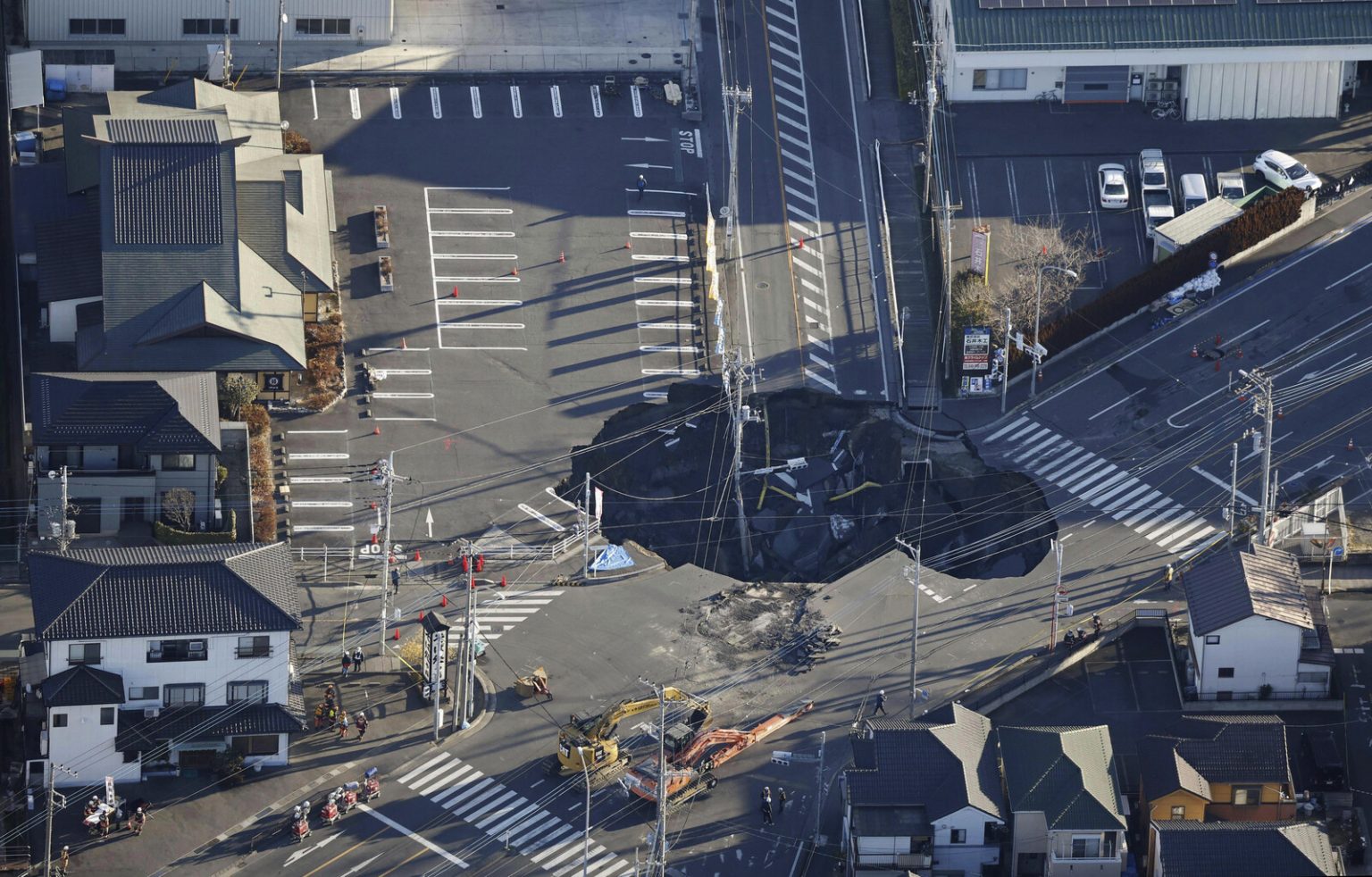A massive sinkhole, measuring 40 meters wide, has ensnared a 74-year-old truck driver in the Tokyo suburb of Yashio since Tuesday, triggering a complex and urgent rescue operation hampered by unstable ground conditions and impending snowfall. The incident began with the sudden collapse of the road, swallowing the truck and plunging the driver 15 meters into the chasm. Initially, the sinkhole was significantly smaller, but it has rapidly expanded over the ensuing days, swallowing more earth and debris, burying the truck’s cabin deeper into the abyss and significantly complicating rescue efforts. The driver’s condition remains uncertain, although earlier reports indicated he was conscious and communicative. However, the unstable ground has hindered attempts to maintain contact and assess his current state. With the threat of heavy snowfall looming, the race against time to extract the trapped driver has intensified.
Swedish rescue personnel, collaborating with Japanese authorities, have employed various strategies to reach the entombed driver. Initial attempts to lift the truck with a crane proved unsuccessful due to the precarious nature of the ground surrounding the sinkhole. Subsequent digging operations also faced challenges due to the continued expansion of the hole and the risk of further collapse. The latest approach involves the construction of a 30-meter long ramp, designed to be lowered into the sinkhole, providing a stable platform for rescuers to access the truck and extract the driver. This intricate maneuver requires careful precision and constant monitoring of the surrounding ground conditions to ensure the safety of both the rescue team and the trapped individual. The operation is being overseen by regional governor Motohiro Ono, who has expressed determination to rescue the driver as quickly and safely as possible.
The cause of the sinkhole is attributed to a failure in the local sewage system. This underground collapse has triggered a secondary crisis, as both rainwater and sewage have begun to fill the expanding cavity. The influx of wastewater further complicates the rescue operation, increasing the risk of contamination and adding to the instability of the ground. To mitigate the pressure on the sewage system and minimize further flooding of the sinkhole, authorities have taken the unusual step of appealing to over a million residents in the surrounding areas to restrict their water usage. This request includes refraining from showering, bathing, and using washing machines, highlighting the severity of the situation and the interconnectedness of the sinkhole crisis with the wider community’s infrastructure.
The diversion of sewage water to the nearby Edo River represents another measure taken by authorities to manage the wastewater overflow and prevent further complications at the sinkhole site. This action underscores the wider impact of the sinkhole incident and the need for comprehensive solutions to address both the immediate rescue operation and the underlying infrastructural issues that contributed to the disaster. The combination of the sinkhole’s expansion, the accumulation of wastewater, and the impending snowfall creates a complex and challenging scenario for the rescue teams, emphasizing the need for efficient and coordinated action.
The unstable ground surrounding the sinkhole presents a significant hurdle for the rescue operation, as it poses a constant threat of further collapse and hinders access to the trapped driver. The continuous expansion of the sinkhole indicates ongoing ground movement and instability, making it difficult to predict the terrain’s behavior and plan accordingly. This uncertainty complicates the rescue strategy and demands constant vigilance from the rescue teams, who must prioritize safety while working against the clock. The impending snowfall further exacerbates the situation, as the added weight of the snow could further destabilize the ground and impede rescue efforts. The combination of unstable ground and adverse weather conditions creates a precarious environment that necessitates careful planning and adaptable strategies.
The incident in Yashio highlights the vulnerability of urban infrastructure and the potential for unexpected disasters to disrupt daily life. The sinkhole, triggered by a sewage system failure, has not only trapped an individual but also impacted the water usage of over a million residents. This incident underscores the importance of maintaining and upgrading infrastructure to prevent such occurrences and the need for effective emergency response systems to address crises swiftly and effectively. The ongoing rescue operation serves as a testament to the dedication and resilience of rescue personnel and the community’s collective effort to overcome this challenging situation. As the rescue mission continues, the focus remains on the safe extraction of the trapped driver and the long-term mitigation of the underlying infrastructural issues that led to this dramatic event.














